There’s never a topic that get’s so many of the MyMT™ women more engaged than libido! It seems that as soon as one woman mentions it in my private coaching group, a flood of comments pour in. I’m not surprised.
When my own libido went west during peri-menopause, I just put it down to exhaustion. Crawling into bed at night was simply a mission to get to sleep, more than any other activity!
There are so many challenges for women during their menopause transition and for many, a declining libido is just another one of these challenges.
I think this image supplied with permission from the wonderful Christchurch artist, Kirsty Collett from Prickle and Pop artwork depicts how many women feel when menopause hormonal changes chase away our mood, motivation and mojo! I love Kirsty’s humour too.
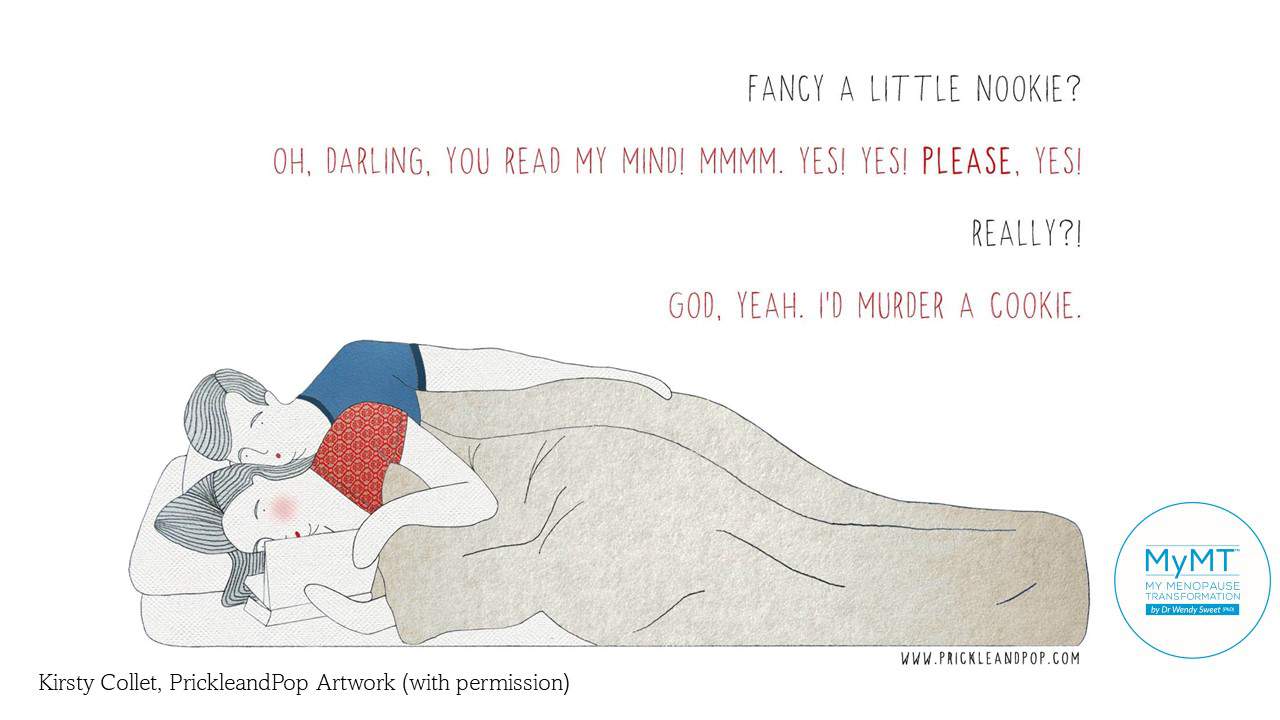
What’s going on with loss of libido?
There are plenty of women who are struggling with numerous symptoms in menopause, not just a declining libido. But with so much going on in the typical life of a midlife woman, it’s important to understand that menopause hormonal changes aren’t just to blame – busy, stressful lives are to blame too, including on the effect of low libido.
Exhaustion from insomnia and inflammatory changes throughout the body, (which accelerate during peri-menopause and menopause), and high stress levels, are all factors that impact low moods and low libido.
This is because all of these factors, impact a higher production of one of our stress hormones, called cortisol and in turn, higher cortisol levels impact the production of progesterone – one of the main hormones that helps to control moods and libido (as does testosterone).
If cortisol levels are high in your female clients, then progesterone is used up more rapidly in the adrenal pathway in order to keep synthesizing cortisol. This can cause an imbalance with oestrogen. Although animal studies show that during times of stress, both cortisol and progesterone are elevated (Herrera et al, 2016), it is the chronic exposure to stressors (physical, environmental and emotional), that may impact a woman’s production of progesterone, causing levels to be low and out of balance with oestrogen levels.
Cortisol is a powerful stress hormone that can build up over time in our body. Higher cortisol levels inhibit sexual arousal because high cortisol affects the balance between oestrogen and progesterone as well as impacting the production of testosterone – another hormone that helps with libido.
I talk a lot about cortisol management in the MyMT™ programmes, because it doesn’t just affect libido when it’s higher than normal. It affects your sleep, moods, food cravings, exercise recovery, hot flushes and your immune system too.
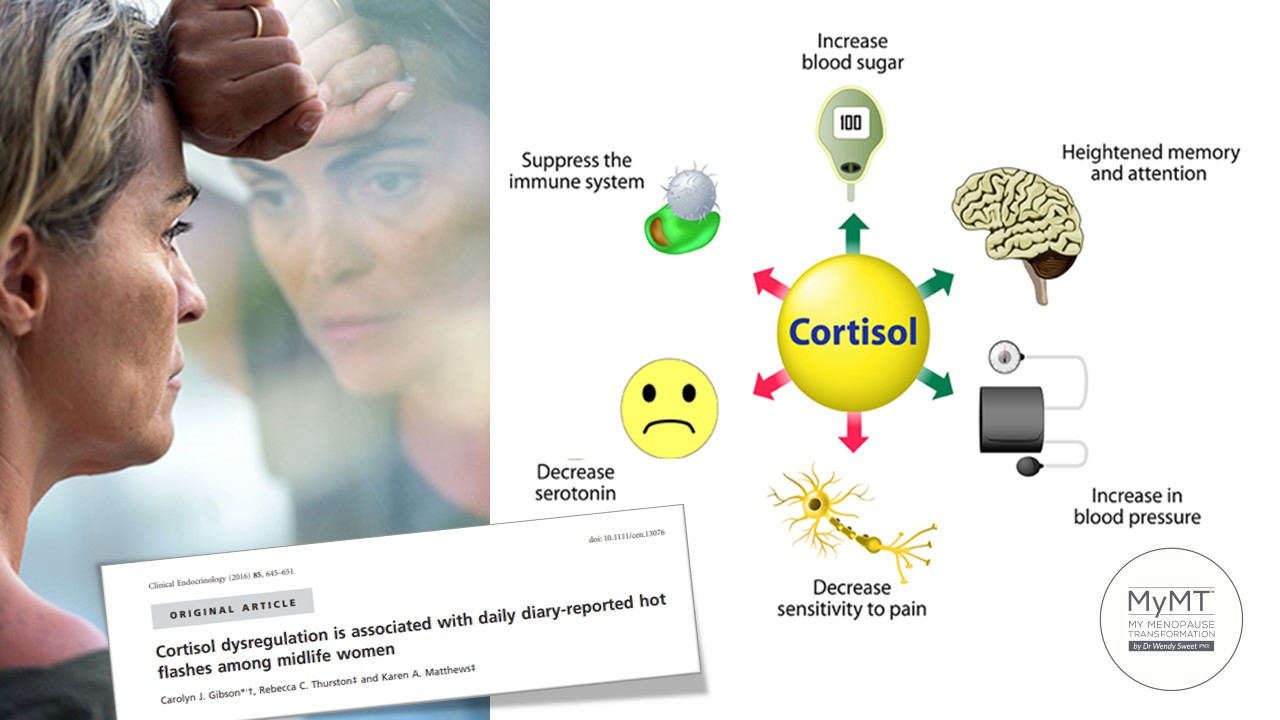
So, the first message from me is that if your clients aren’t sleeping and feeling busy and exhausted, then start with helping them to turn these concerns around. All of these are stressors that arrive in mid-life also have an affect on libido.
Declining hormones in menopause is a balancing act!
Oestrogen, progesterone and testosterone are all known as hormones of sexual desire and functioning and they have been helping you with your menstrual cycle for decades.
The powerful connection between all of these hormones and the lifestyle that women lead, means that libido has been fluctuating since puberty. Reproductive hormones are classified as steroids, but they act as chemical messengers in the human body too.
Hence, reproductive hormones do not act in isolation – they also send powerful signals to other hormones around the body to either increase or decrease production.
These ‘other’ hormones include the thyroid, pituitary and adrenal hormones. They all ‘talk’ to each other and help the body to remain in balance – a physiological process known as ‘homeostasis’.
When your clients aren’t sleeping, or have low thyroid function or they have high stress levels, or they aren’t getting the nutrients that they need in menopause (e.g. due to smoking, IBS, alcohol intake, over-exercising or too much fasting etc), then these factors accumulate and increase cortisol levels, which in turn may impact libido.
All hormones are affected by changing oestrogen and progesterone levels in menopause – there is a powerful connection between the pituitary, thyroid and adrenal hormones and reproductive hormones including testosterone, through the HPA-Thyroid-Ovarian Axis.
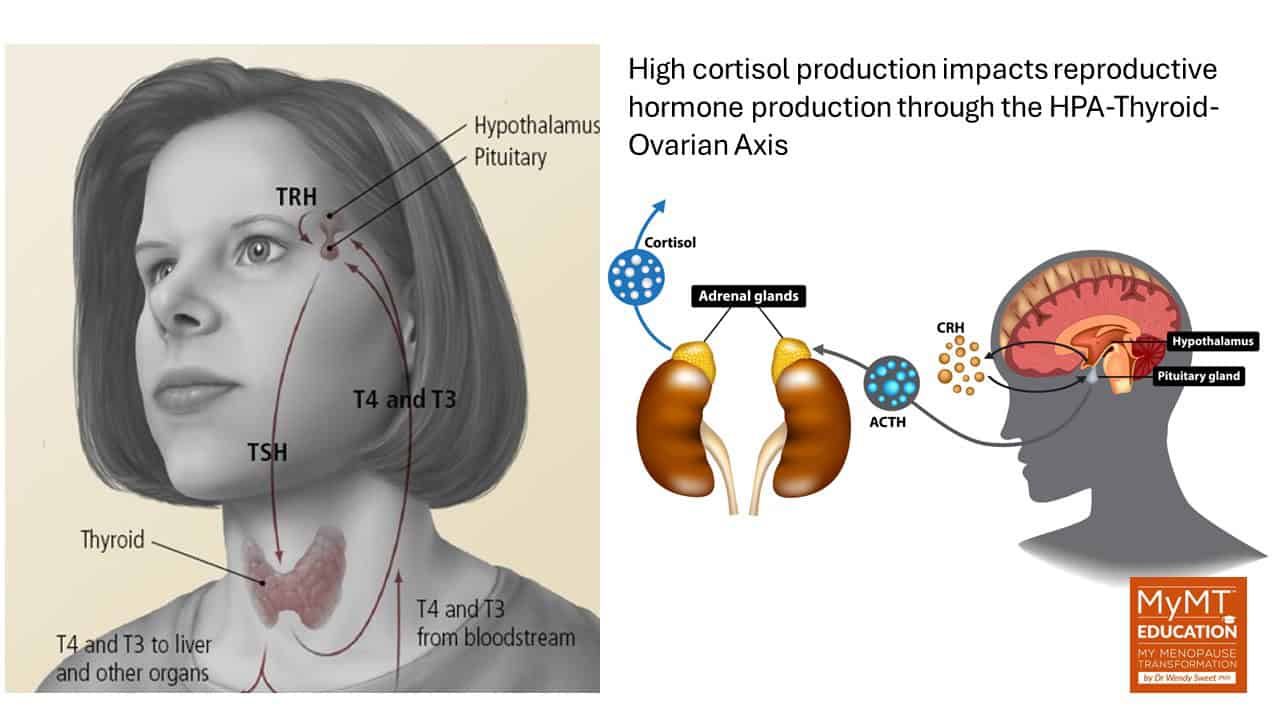
Steroid hormones help to control the following functions in the body:
- Metabolism
- Inflammation levels
- Immunity
- Salt and water balance
- Sexual characteristics
- Bone and muscle density
Every hour of every day, all of our hormones are adjusting to maintain our metabolism. This includes oestrogen, progesterone and testosterone – another hormone of libido in women.
Females do produce some testosterone in the ovaries but what comes as a surprise to many women on the MyMT™ programmes, is that testosterone is excreted from ovaries (if women still have them), during post-menopause too.
Some testosterone is also produced by the adrenal glands. But don’t worry – this doesn’t meet the amount of testosterone that males produce. This is around 7 times greater than women, because men use testosterone daily to help in muscle repair, immune health, bone density, reproductive function etc, – in fact, they need as much as 20 times greater testosterone compared to females – even more if they are weight training and increasing muscle size or if they are athletes.
One of the most important things that we need to remember is that our hormones are always trying to balance each other out.
However, as I mentioned earlier, there are many factors impacting a faster rate of decline of the main reproductive hormones, including:
- High stress levels (past and/or current)
- Poor diet
- Insomnia
- Underweight or overweight status
- Over-exercising
All of these factors impact the adrenal glands, which impacts cortisol production, which in turn impacts the availability of progesterone and testosterone in the adrenal pathway. Too much stress and inflammation keeps the liver producing higher levels of cholesterol, which is needed to keep producing progesterone, which in turn is needed to keep producing cortisol. If progesterone levels are low and testosterone production is low, then libido is low too.
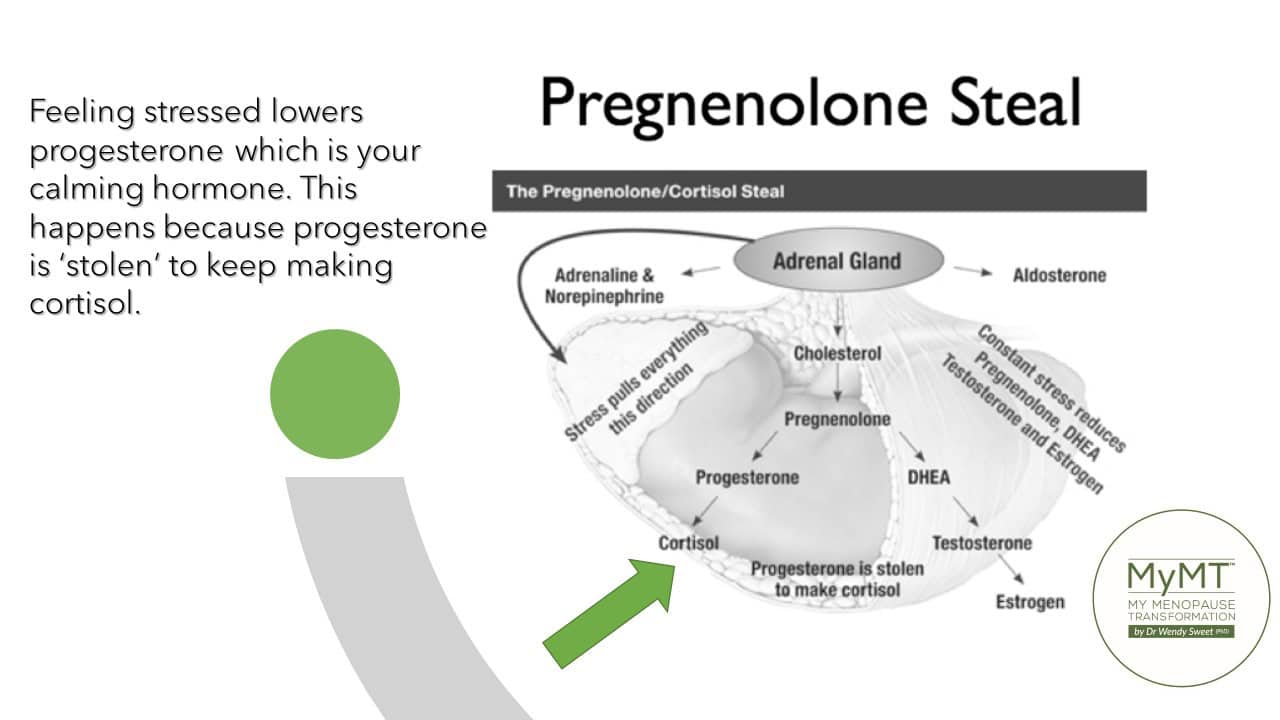
How can we help clients to maintain optimal progesterone and testosterone levels, and lower cortisol levels with lifestyle solutions?
Although many women will choose to seek medications for their libido, including HRT and/or Testosterone or Progesterone, there are a number of lifestyle-solutions that you can share with them too.
– Focus on Food which increases Progesterone and Testosterone
Testosterone in both males and females is made from cholesterol in the adrenal glands. That’s why scientists are now changing their tune about the relevance of cholesterol in the diet although women with high cholesterol still have some risk for changing heart health, so caution with dietary cholesterol from animal products is still important.
Cholesterol helps to make your hormones. This means the right fats are needed to help our hormonal health as we get older. Fats break down to cholesterol as well as help to carry important fat-soluble vitamins that help in the production of hormones. One of the most important hormones for helping boost our immune health and helping us feel better is Vitamin D (and yes, this is now recognised as a hormone!).
Eating foods that give natural progesterone can help some women too. I tell you about some of these in the video below.
– Get Sleep Sorted.
If your clients are exhausted and experiencing numerous hot flushes/ flashes, especially in the evening, then the last thing they may want to do is to share the bed! As the women on the MyMT™ programmes discover, our normal circadian 24 hour cycle means that we accumulate heat in the evening.
This increases blood pressure, heart rate and thyroid activity before bedtime, so often women either feel hot before going to bed, or they heat up overnight causing night sweats and throwing off the bed-covers. Heat accumulation in the evening also increases cortisol levels. These high cortisol levels compete with the sleep hormone, melatonin.
Reducing blood pressure, temperature and heart rate before bedtime, is therefore an important lifestyle strategy for women. Strategies and changes to the type and timing of their food in the evening are all discussed in the MyMT™ Education Practitioner Course.
The importance of re-learning how to sleep all night during menopause is more important than anything else women do. A good night’s sleep can be sabotaged in menopause from hot flushes, night sweats, worry, anxiety, low iron, low Vitamin D and of course low melatonin production (again due to high cortisol levels in the evening).
This is why getting sleep and the circadian rhythm sorted with clients, is a starting point for helping them turn around libido, along with any other medical interventions they may be trying.
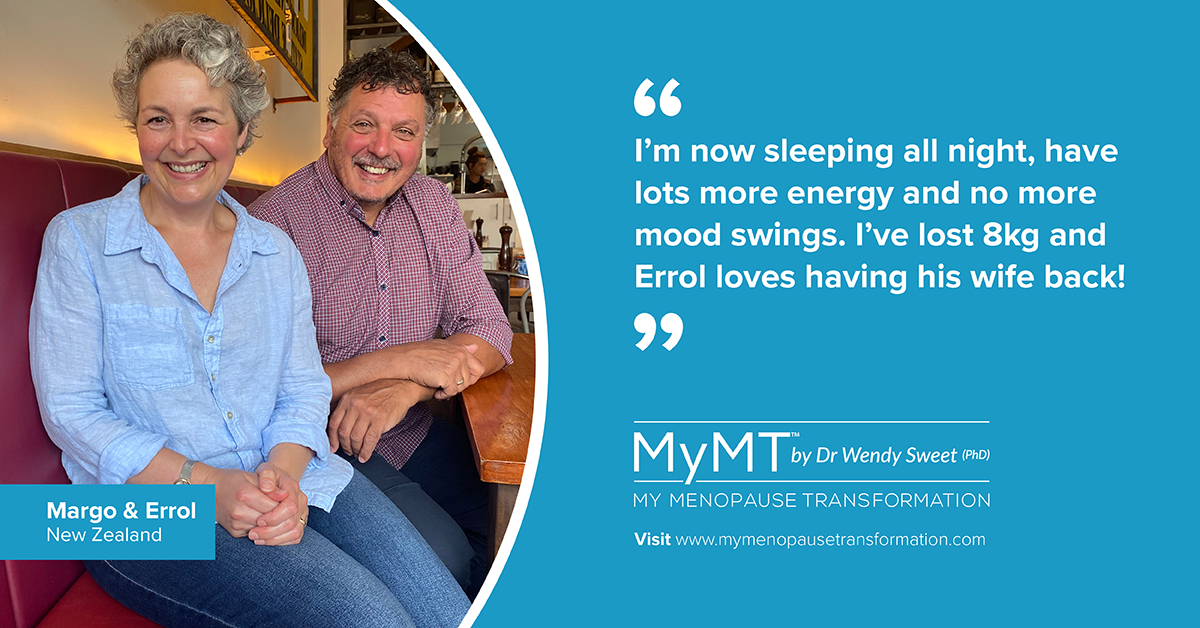
– Keep stress hormones low.
We all know that this is easier said than done, with clients. Whilst, stress has many benefits to the body, as women transition menopause, both emotional and physical stress (e.g. from shift work) can contribute to pregnenolone steal. When cortisol levels are higher than normal, this prevents adrenal glands turning cholesterol from the liver into testosterone because it is being used up in the progesterone pathway to keep making cortisol.
Sex-therapist, Kelly Stirling from Australia, explains this in her Success Story HERE. She sees the result of the stressful lives of midlife women all the time in her clinical practice.

– A healthy LIVER is critical to a healthy libido.
This is because some of the synthesis or manufacturing of all of your steroid hormones, including testosterone occurs in the liver. It takes around 6 weeks to renew and repair the liver, but the great news is that it is one of the only organs that is capable of repairing as we age.
In fact if we are feeling exhausted during menopause, then this is often because our liver isn’t working as optimally as it should and we aren’t absorbing our B-Vitamins, which in turn, help to synthesize progesterone (see my video above).

– Increase water intake.
Steroid hormones, including Testosterone, are transported through the blood stream by being bound to carrier proteins in the plasma. These carrier proteins are formed from good quality fats and cholesterol in the diet, but water intake is equally important to help plasma production and transport.
– Get clients focused on reducing ALCOHOL as this decreases testosterone production.
The enzyme in alcohol (Aromatase), is used to convert testosterone to oestrogen. The more women drink, the more testosterone they lose, the lower their libido.
-Reduce Xeno-Oestrogen uptake from the environment.
These are the types of artificial substances that get into the body (especially the liver) and mimic oestrogen. Plastics and household chemical exposure are an example of xeno-oestrogens that can be absorbed into the body. The higher the oestrogen levels in your body, the lower your testosterone levels.
– Poor Thyroid function (hypo-thyroidism) reduces testosterone levels.
Low thyroid function may be from iodine deficiency. This powerful mineral feedsthe thyroid gland, which helps to regulate energy levels. Low carbohydrate diets also contribute to poor thyroid function. The type of carbohydrate that women eat, especially resistant starches, help to maintain healthy thyroid function. It’s why I encourage many of my own clients to eat more plant-starch during the day.
When women go into peri-menopause, they are still at the mercy of their menstrual cycle. This means that sexual desire ebbs and flows too.
In the first half of the cycle, peaking at ovulation, we are the most fertile which increases libido. During the second half of the cycle, the egg is no longer viable and interest in sex typically wanes, as does our natural lubrication. So yes, timing is everything when it comes to our libido.
– Are your clients too thin? Low body weight can also lower testosterone production.
With low body fat, excess exercise, poor sleep and inadequate caloric intake, the female body detects starvation. One of the gut hormones called Leptin, plummets, causing the hypothalamus to think that women are in starvation mode. Without leptin, the entire pituitary sex hormone cascade is not enacted.
No Luteinizing Hormone (LH), no Testosterone, no Oestrogen, no Prolactin, no Progesterone. This is why adequate body fat levels are unquestionably crucial for all reproductive function. Some of your clients may have entered into peri-menopause with very low body fat, meaning that already their Testosterone levels are at rock bottom. Libido goes more quickly.

– RESISTANCE training boosts testosterone levels and helps bone density (which needs optimal progesterone levels).
Those women with naturally high testosterone (usually larger women who are strong and develop muscle very easily), need a little bit more cardio and calming exercise, rather than lots of weight training. Whilst alcohol and many medications can blunt your libido, the great news is that the right exercise can stimulate libido. Not too much and not too little.
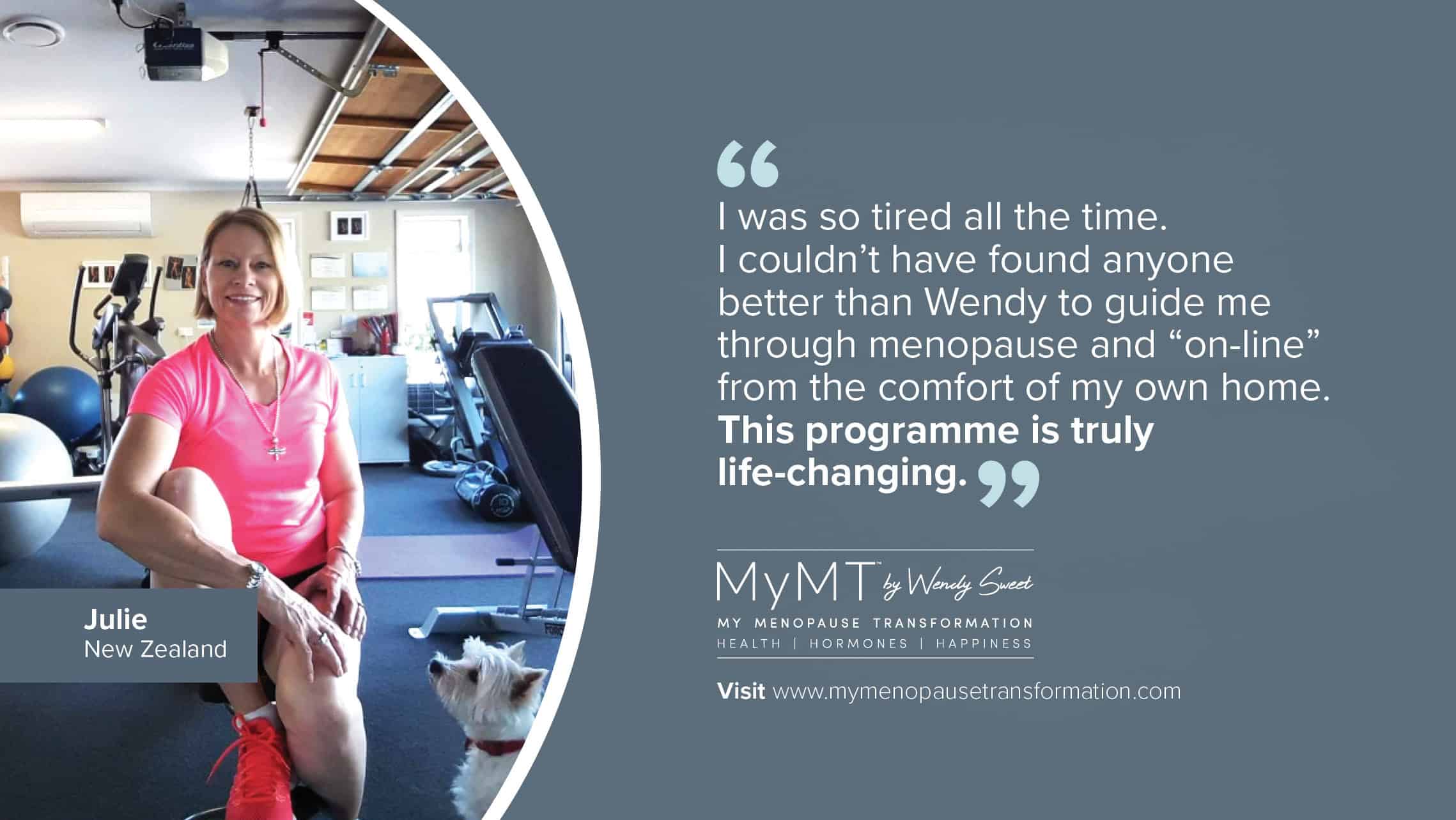
Finally, women need to be gentle on themselves and understand that their body is ageing. Supporting your clients to talk with their partner to understand how they are feeling is also an important role that we can play as Coaches and Practitioners.
The menopause transition can be a challenging time of our lives – I know it was for me too. But when we understand that the body is going through numerous changes not only relating to its biology, but psychological changes, then we can support women into lifestyle changes, that help them to embrace the years ahead with pleasure and enjoyment.
Wendy Sweet, PhD/ Women’s Healthy Ageing Researcher & MyMT Creator & Coach
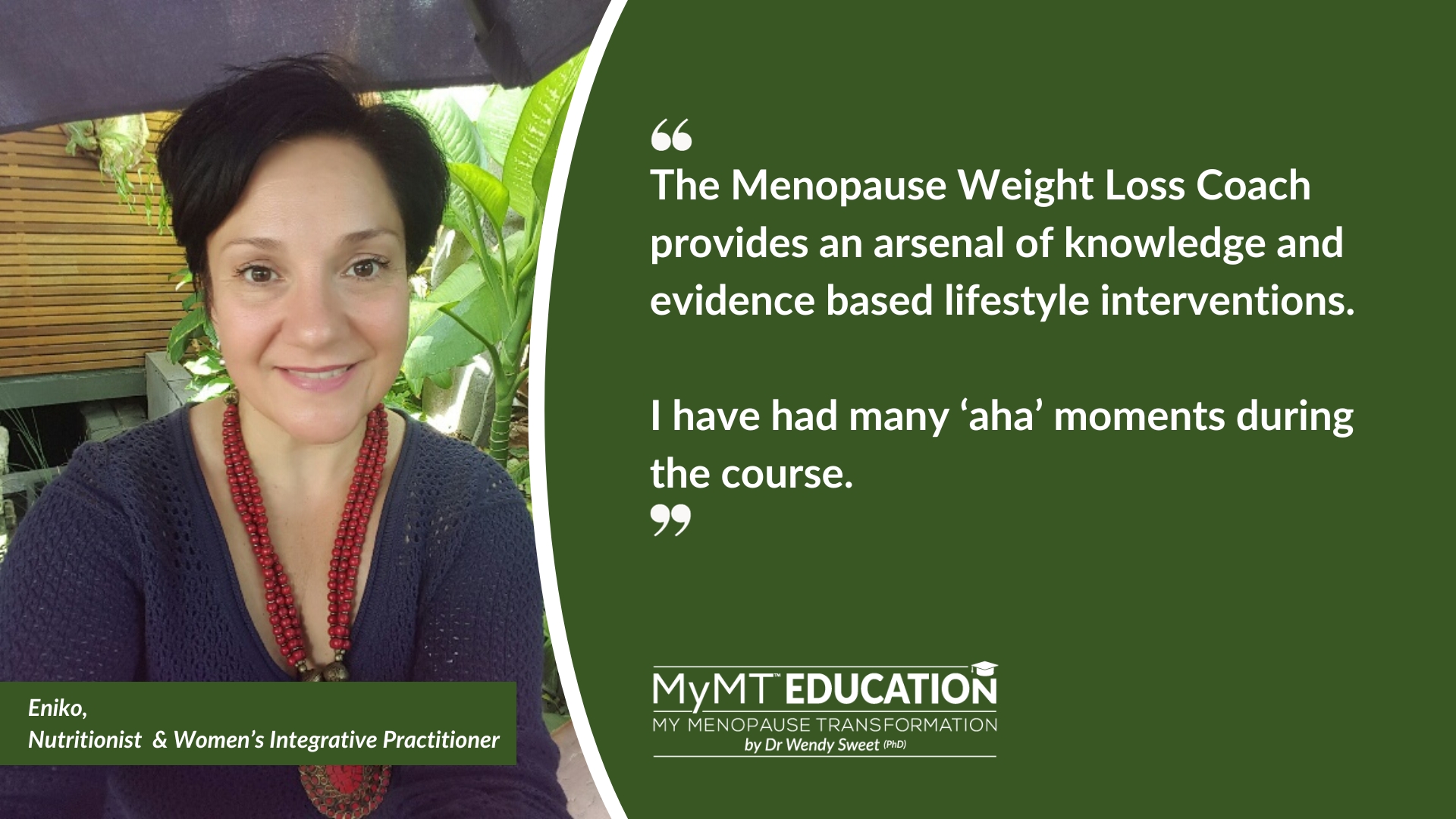
References:
Barth C, Villringer A, Sacher J. Sex hormones affect neurotransmitters and shape the adult female brain during hormonal transition periods. Front Neurosci. 2015 Feb 20;9:37.
Cable JK, Grider MH. Physiology, Progesterone. [Updated 2023 May 1]. In: StatPearls [Internet]. Treasure Island (FL): StatPearls Publishing; 2024 Jan-.
Gullette, M. (2011). Agewise: Fighting the new ageism in America. Chicago: University of Chicago Press.
Herrera AY, Nielsen SE, Mather M. Stress-induced increases in progesterone and cortisol in naturally cycling women. Neurobiol Stress. 2016 Feb 11;3:96-104.
Holland, J. (2015). Moody Bitches. London, UK: Thorsons Publ.
Lock, M. (1998). Anomalous ageing: Managing the post-menopausal body. Body and Society, 4, 35-61

